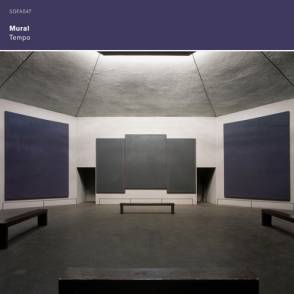There’s a split second at the outset of any form of improvisation, musical or otherwise, in which you can feel space breathe. There may be a division of performers and audience, but at this glimmering inception point it may suddenly be hard to tell any differences between us. All (or few) are gathered here to create some new being, a gestalt formed through our combined force of will remaining resolutely pertinent to the place in which this new configuration shall occur. I’ve stood in vast smooth-walled white cubes with a handful of strangers and huddled in tiny sweaty-stoned basements with a crowd of friends as we wait for the right moment to begin. Always there has been the sudden feeling, as though this bedroom or rural glade, conference centre antechamber or squalid art pit were sizing us all up. "Now that you’re all gathered here", the space demands to know, "what do you think you’re going to do?".
That fleeting enjoined challenge of space and people that occurs at these moments has always seemed to me the most important occurrence throughout the performance that will follow. A myriad of possibilities are open to us; we may collectively become blissfully dazed wanderers in the fourth dimension, we may have a quick blast of inspiration followed by aching minutes of weariness and torpor or we may just drift away from each other fuelled by dismay and disappointment at squandered opportunities.
Which is why I struggle with the fact that this remarkable three-disc improv set by the Mural trio of Jim Denley, Kim Myhr and Ingar Zach cuts out the first quarter of what was originally a four-hour performance. As the first disc’s ‘Second Hour’ yawns open, percussive and string drones usher the listener in before sparks of saxophone shards toot and squall like low gliding gulls. A cough, the sounds of footsteps and we are away. At least, on record and in the form of Tempo that is. Had you actually been present in Houston’s Rothko Chapel on 27 April 2013, you would almost certainly have a different response to this point of the performance. Perhaps in the flesh we would encounter Mural in a transition phase following an opening hour of aimless diversions and dead ends. No explanation is given for that missing hour and so it feels like a potentially crucial chapter ripped from a novel or a panel necessarily discarded in order to craft a perfectly formed triptych.
Sleeve notes by Mural proclaim Tempo to be all "one moment", and so any much-rehearsed debate as to whether improvised music can ever be adequately documented may simply be cast aside by the fact that perhaps that first hour wasn’t of the same moment as what follows. What you hear on Tempo is the use of space and presence within the Rothko Chapel and how Mural are able to place us within the same context in which they performed that day. Any audience or visitors during Mural’s afternoon there were seemingly encouraged to interact however they desired, whether pulling up a chair in order to immerse themselves completely within the experience or forced to tolerate another part of the environmental make-up as they contemplated the darkly glowering canvases.
The overwhelming impression one takes from Tempo is that the convergence of place, performers, presence and sound have brought into being a new space, entirely unique and unrepeatable. Perhaps it is that very absence of the first hour that has helped form this space. Tempo in its own right is a grand recorded work in which the listener should amble and drift, feeling the breath and pulse of Mural’s music as it glides into minutes of meditative silence or erupts into flurries of wind, string and steel. It’s the sound of your heartbeat and blood rushing through your body as you stand silently within an austere place of much-needed retreat. The thunderstorm which breaks midway through ‘Third Hour’ only emphasises further this sense of refuge within a brooding sanctuary set apart from your own external troubles and trials.
<div class="fb-comments" data-href="http://thequietus.com/articles/18983-mural-tempo-review” data-width="550">


